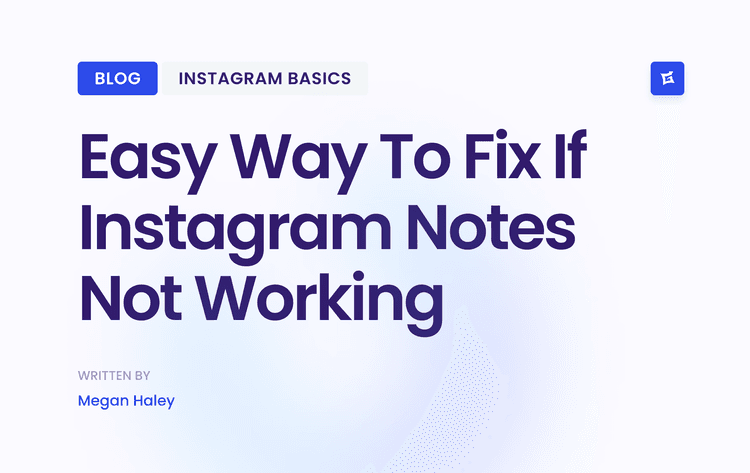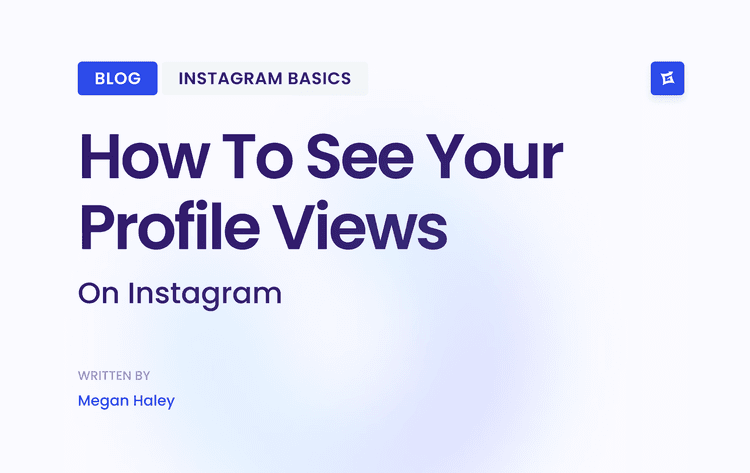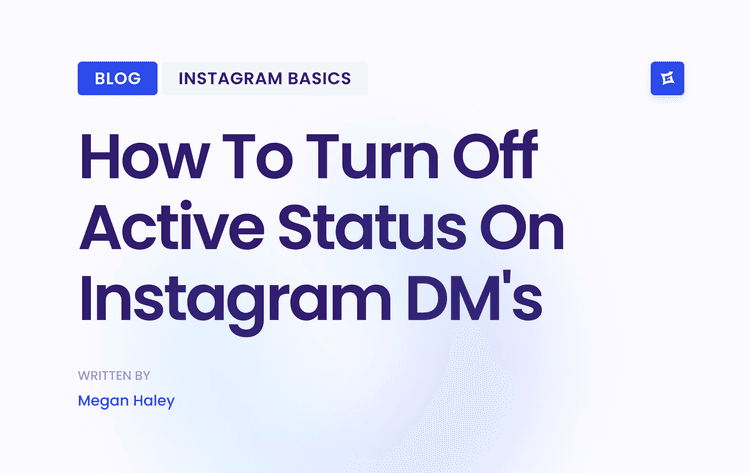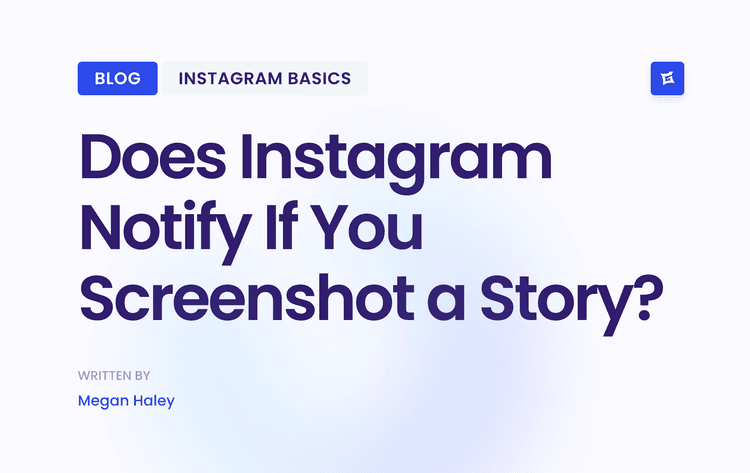Reading the Brand Partnership Landscape Like a Pro
Platform Strategies for Brand Deals
Different platforms offer unique advantages when it comes to landing brand deals. Instagram, for example, remains a powerhouse for visual storytelling and product showcases, making it perfect for fashion, beauty, and lifestyle creators. TikTok, with its short, engaging video format and meteoric rise, is ideal for capturing attention with creative content. YouTube, on the other hand, allows for in-depth reviews, tutorials, and collaborations thanks to its longer video format, which attracts brands looking for more detailed product integration. Finding the platform that best suits your content style and target audience is essential for successful brand partnerships.
To nail those brand deals, you also need to understand the bigger picture of influencer marketing. The industry is exploding, and by 2025, the global influencer market is predicted to hit a massive $33 billion – more than triple its 2020 size. This growth shows how much brands are relying on influencers to connect with their audiences and get their message out there. Instagram alone is expected to grab a huge chunk of this market, with its influencer marketing segment projected to exceed $22 billion in 2025. You can dig deeper into this research here. This rapid expansion creates a ton of opportunities for creators, but it also means you need to be strategic and understand what brands are looking for in today's fast-paced market.
Knowing where brands are investing and which platforms offer the best return on investment can significantly impact your ability to secure those lucrative partnerships. Understanding these trends will help you position yourself effectively and attract the right brands for your niche. This market research can inform your content strategy, helping you focus your efforts on the platforms and content formats that brands prefer right now, maximizing your chances of securing those deals.
To help you visualize this, I've put together a table summarizing the key platform opportunities:
Platform Opportunities for Brand Partnerships
This table compares social media platforms, highlighting their potential for brand partnerships, typical deal values, and engagement rates. It's a quick snapshot to help you think strategically about where to focus your efforts.
Instagram has a large market size, with average deal values that vary widely. It offers a moderate engagement rate and is best suited for visual storytelling, product showcases, lifestyle content, and high-quality images.
YouTube also has a large market size, but typically commands higher average deal values. It boasts a high engagement rate and is ideal for in-depth reviews, tutorials, collaborations, and long-form video content.
TikTok is experiencing a rapidly growing market size, with deal values that vary. It offers a high engagement rate and is best known for creative short-form videos, trending challenges, and other engaging content.
As you can see, each platform has its strengths. While YouTube often commands higher deal values, TikTok boasts higher engagement rates. Instagram offers a balance of both and remains a strong contender for many brands. The key is to find the platform that best aligns with your content and audience.
Growing An Audience That Brands Can't Ignore
Let’s be honest: a million followers who scroll past your posts without a second glance won’t attract any serious brand deals. It’s like hosting a massive party where everyone stands around awkwardly in silence. Plenty of people, but zero real interaction. Brands want to collaborate with creators who cultivate lively, engaged communities. I’ve personally seen creators with smaller, but highly dedicated audiences land amazing deals simply because their followers are genuinely invested in their content. Understanding your audience is the key to unlocking those sought-after brand partnerships.
Identifying Your Ideal Audience
So, how do you build an audience that brands will love? It all begins with understanding who you’re talking to. What makes them tick? What are their passions, needs, and frustrations? Maybe you're interested in creating a personal brand. Let’s say you’re a food blogger specializing in quick, healthy weeknight meals. Your ideal audience isn’t just anyone who eats. It’s busy professionals, time-strapped parents, and health-conscious individuals seeking convenient options. This specific targeting lets you tailor your content and draw in the right followers – the brands, people in the food and wellness industry are actively searching for.
Content That Connects and Converts
Once you know who you’re targeting, it’s time to create content that truly resonates with them. This goes beyond just visually appealing photos. It’s about providing real value. Think practical tips, insightful advice, and genuine stories that foster trust and position you as an expert in your niche. Back to our food blogger example: sharing simple recipes, meal prep strategies, and grocery shopping hacks offers true value to that specific audience, naturally attracting brands trying to connect with the same demographic. It's this organic connection that makes your audience – and you – incredibly attractive to potential brand partners.
Building a Community That Brands Notice
Building a community isn’t just about racking up likes; it’s about sparking real conversations. Ask questions, respond to comments, and create opportunities for your followers to connect. This cultivates a sense of belonging and loyalty, turning your follower count into a thriving community. This strong community becomes your secret weapon when pitching brands because it shows the true power of your influence, extending far beyond mere numbers. Did you know that roughly 86% of U.S. marketers are planning on partnering with influencers in 2025? This shows just how vital it is to secure those brand deals. This stat demonstrates a strong belief in the effectiveness of influencer marketing, specifically its impact on purchasing decisions and brand engagement. Discover more insights. This growing emphasis on influencer collaborations highlights the importance of a dedicated community.
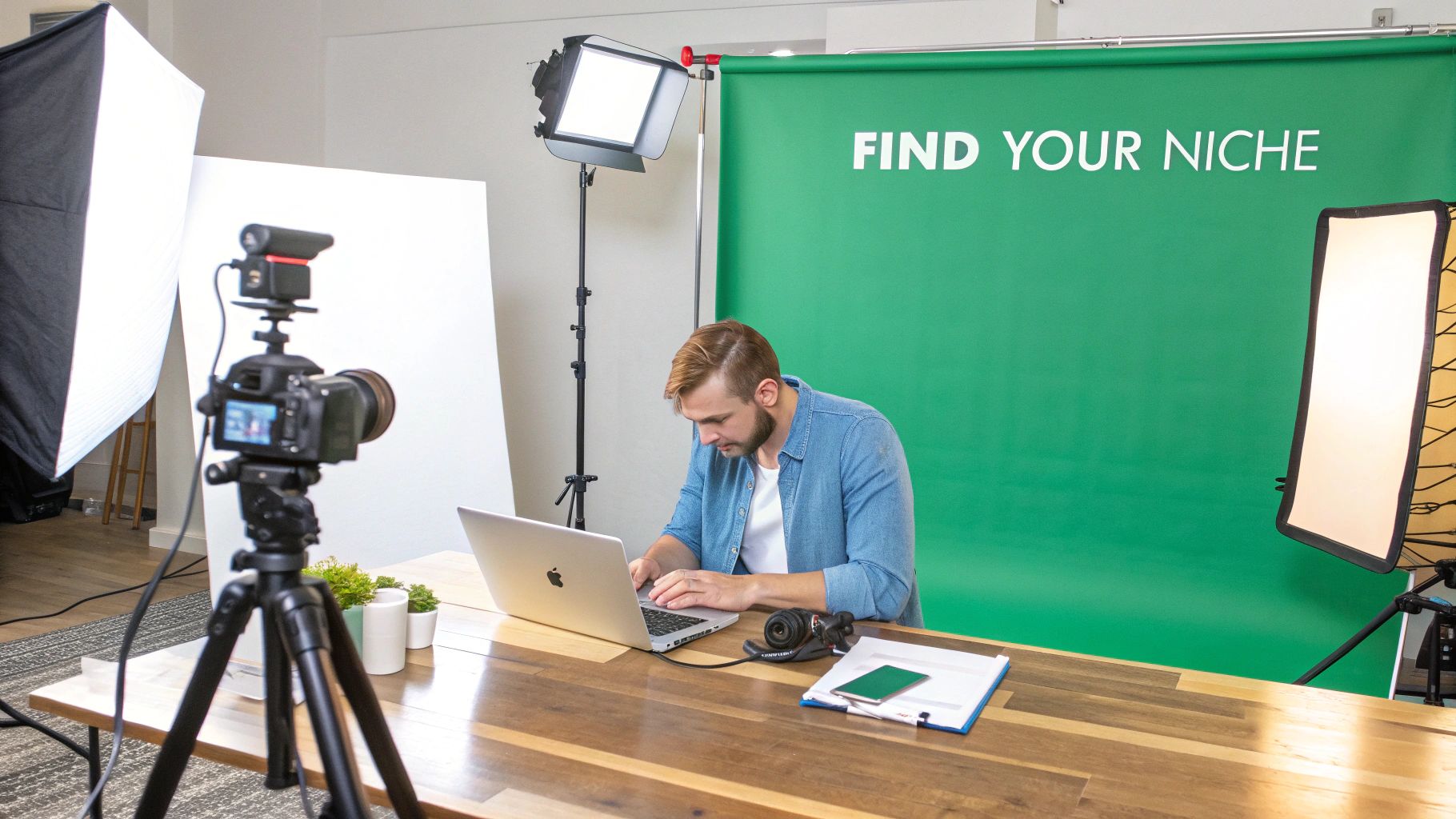
This engaged audience is like social proof, demonstrating the impact of your content and making you a highly desirable partner. By focusing on quality interactions rather than quantity, you're building a valuable community that brands simply can’t ignore, paving the way for successful, long-term partnerships.
Developing Your Partnership Strategy That Works
Spraying and praying with pitches isn't the way to land brand deals. It’s like fishing with dynamite – messy and ineffective. Successful creators know it’s about strategic targeting, not volume. Think of it more like detective work: research your “suspects” (the brands), understand their motives (marketing goals), and find the perfect angle for your case (your value proposition).
Researching Brands Like a Detective
Top creators go beyond a brand's website. They delve into existing campaigns, looking at the type of content, the influencers already involved, and the overall message. This reveals what a brand truly values, often going beyond the public-facing brief. For example, a sustainable clothing brand might publicly emphasize eco-friendly materials, but their campaigns could reveal a deeper focus on community and ethical production. This nuanced understanding helps you tailor your pitch perfectly.
Knowing a brand’s existing influencer roster is invaluable, too. What kind of content are those creators making? What’s the engagement like? This competitive analysis can give you an edge, allowing you to offer something fresh and different.
Identifying Perfect Partnership Opportunities
This in-depth research also helps you spot opportunities before everyone else. By analyzing industry trends and keeping an eye on emerging platforms like TikTok, you can identify brands just starting to explore influencer marketing or expanding into new niches. This early bird approach positions you as a forward-thinking creator. A larger audience increases your chances, so also consider how to expand your reach on platforms like LinkedIn.
Even something as simple as subscribing to a brand's newsletter can give you insights into their current marketing efforts and upcoming campaigns. This allows you to position yourself strategically and offer relevant collaborations.
Developing Irresistible Value Propositions
Once you understand a brand’s needs, craft a value proposition that’s a resounding "yes." Go beyond offering just exposure. Focus on how you can help them achieve their objectives. Can you create content that resonates with their target audience? Drive traffic to their website? Generate leads or sales? Demonstrating a clear understanding of their business goals transforms you into a valuable partner. This is the key differentiator for successful creators.
The creator economy is booming. By 2025, the influencer marketing industry is projected to grow by 12.12% to $22.2 billion. This reinforces the importance of strategic partnerships. Don’t just pitch – build genuine relationships months in advance. Showing long-term interest significantly increases your chances of securing a deal.
Writing Pitches That Land in the 'Yes' Pile
Most brand pitches get deleted. That's not meant to be discouraging; actually, it's a huge opportunity. It means your pitch can shine by simply being better than the rest. Think about it: brand managers are drowning in emails. What makes them pause and read yours? Let's dive into creating pitches that grab attention and practically guarantee a "yes." And while we’re talking about streamlining, a smooth content creation workflow is key for hitting deadlines and delivering quality pitches.
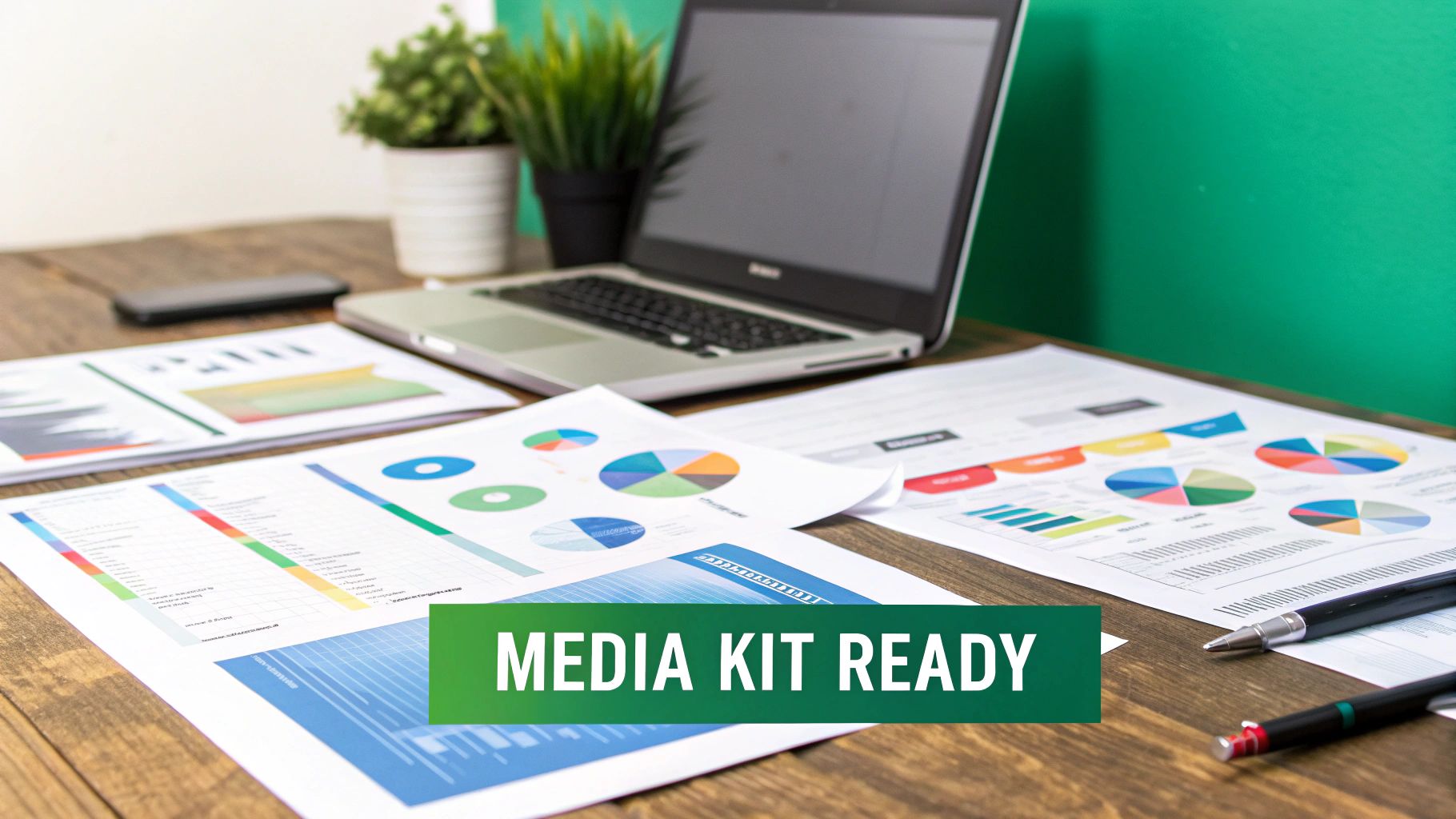
The Psychology of a Winning Pitch
A winning pitch comes down to understanding the person on the other side. They're busy, skeptical, and laser-focused on value. Your subject line is your first (and often only) impression. Skip generic subjects like "Collaboration Opportunity." Instead, get specific and intriguing, focusing on their brand. Imagine pitching a healthy snack brand. A subject line like "Boosting Engagement with Health-Conscious Millennials" is far more likely to catch their eye.
Your opening paragraph needs to hook them instantly. Ditch the formalities. Start with a strong statement that shows you “get” their business and target audience. Then, show them, don't just tell them. Instead of saying you have a “highly engaged audience,” give concrete examples of past wins. Share specific campaign metrics and quantifiable results. Did a previous partnership lead to a 15% increase in website traffic? That’s what they want to hear.
Anatomy of a Successful Pitch
Every successful pitch follows a simple formula: problem, solution, benefit. First, pinpoint a challenge the brand might be facing. Then, position yourself as the answer. Finally, clearly explain the benefits of working with you. Remember, this isn't about what you get – it's about what they get. Will you create killer content that speaks to their demographic? Drive traffic to their website? Boost brand awareness? Focus on the value you deliver.
Take a look at AspireIQ, a platform many influencers use to manage brand partnerships: They offer tools for influencer discovery, campaign management, and performance tracking. This shows how complex the brand deal landscape has become, highlighting why creators need a strategic approach, using data and professional tools to stand out.
Mastering the Follow-Up
Never underestimate the power of a well-crafted follow-up. If you haven't heard back in a reasonable time, a polite check-in can work wonders. But avoid sounding desperate. Reiterate your value and express your continued interest in partnering. Even if they say "no" this time, a professional follow-up leaves a positive impression and can open doors for future opportunities. Building relationships is a marathon, not a sprint.
Negotiating Brand Deals Like You Mean Business
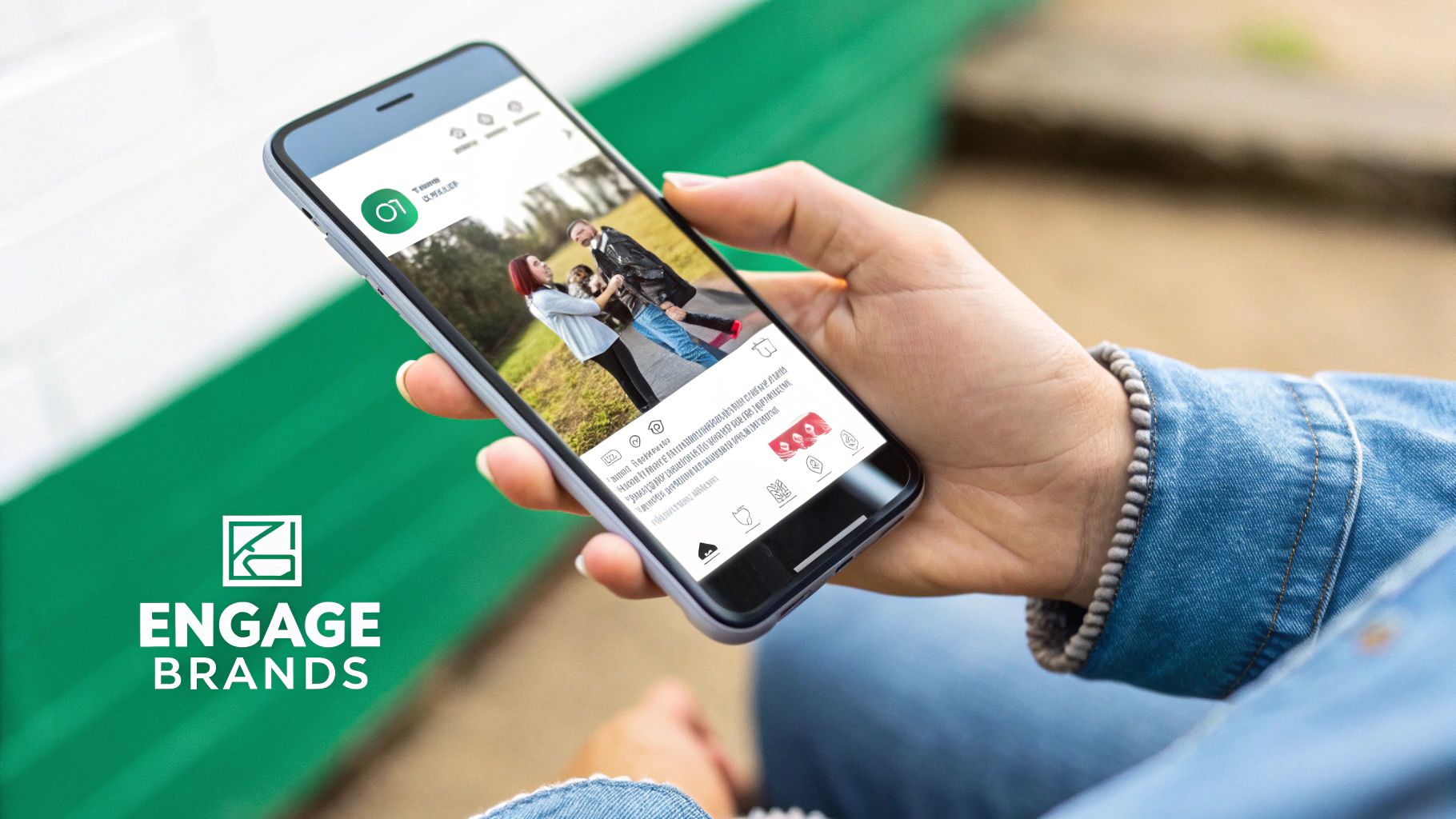
Landing that first brand deal is exciting, no doubt. But the real game begins after the initial high-fives. That’s where knowing how to negotiate becomes super important. I've seen creators leave serious money on the table simply because they weren't comfortable with this part of the process. Negotiating effectively is the difference between a partnership that truly scales up your brand and one that fills your content calendar. Speaking of which, you might find this helpful: How to Measure Social Media Engagement. Understanding your engagement is key to understanding your value.
Knowing Your Worth (and Charging for It)
Underselling yourself is a common trap, especially when you’re starting. Figuring out your rates can feel tricky, but it's essential to get it right. Do your research on industry standards, look at your audience engagement metrics, and then don’t be shy about asking for what you deserve. For example, if you're producing high-quality videos for a brand and you have a solid following, your rate should reflect the time, effort, and value you bring to the table. A good place to start is by checking out what similar creators are charging. Remember, though, your unique skills and audience might mean you can and should charge more.
Usage Rights: Protecting Your Future Earnings
Usage rights are another key element to negotiate. They determine how a brand can use your content and for how long. Handing over perpetual usage rights can seriously impact your future earning potential. Imagine crafting a video that goes viral, only to find out the brand can use it forever without paying you another dime. Ouch! Be super clear upfront about the usage period and which platforms the content can appear on. This protects your work and ensures you’re fairly compensated.
To help you get a feel for standard rates, I've put together a quick guide below:
Brand Deal Rate Guidelines by Platform and Follower Count: Benchmark pricing for different types of brand partnerships across platforms to help with negotiation
Instagram Story Rates:
On Instagram, rates range from $50 to $500 per story for accounts with 50,000 to 500,000 followers.
On TikTok, the rate is slightly lower, at $40 to $400 per story for the same follower range.
YouTube does not offer a story feature.
A full buyout for usage rights typically costs 2-3 times the base rate.
Instagram Post Rates:
Instagram posts cost $200 to $2,000 per post for accounts with 50,000 to 500,000 followers.
TikTok posts are priced at $150 to $1,500 for the same follower range.
YouTube does not apply here.
Limited usage rights (e.g., 3 months) are often included in the base rate.
TikTok Video Rates:
On Instagram, TikTok-style videos cost $100 to $1,000 per video for accounts with 50,000 to 500,000 followers.
On TikTok itself, the rate is $80 to $800 per video for the same follower range.
YouTube does not apply here.
Exclusive usage rights can significantly increase the rate.
YouTube Integration Rates:
On Instagram, YouTube integrations cost $500 to $5,000 for accounts with 50,000 to 500,000 subscribers.
On TikTok, the rate is $400 to $4,000 for the same subscriber range.
On YouTube, the rate is higher, at $1,000 to $10,000 per integration.
Usage rights are particularly important for YouTube; the timeframe and permitted uses should be clearly defined.
This list provides a general overview; rates can vary based on factors like engagement, niche, and specific campaign requirements. Use it as a starting point, not a rigid framework.
Walking Away From Bad Deals
Sometimes, the best negotiation strategy is simply knowing when to walk away. If a brand's offer doesn’t align with your values, undercuts your rate, or demands excessive usage rights, don't hesitate to decline. It might feel tough in the moment, but it’s much better than getting stuck in a partnership that ultimately damages your brand. A respectful “no” today can lead to much better opportunities tomorrow.
Contracts and Red Flags
Take the time to fully understand the details of any contract before you sign. Don't just skim it—read every single clause carefully. Be on the lookout for red flags, such as unclear payment terms, overly restrictive clauses, or vague deliverables. If anything feels off, ask for clarification or seek legal advice. Protecting yourself now can save you major headaches down the road.
Negotiating brand deals is about building mutually beneficial relationships. It’s about understanding your value, protecting your interests, and creating partnerships that benefit you and the brand. Remember, a good deal is one where everybody wins.
Turning One-Time Deals Into Lasting Partnerships
Landing a brand deal is a fantastic feeling. But let's be real, one-off collaborations won't build a sustainable income stream. You want a career, not just a gig. I've witnessed how creators who focus on building solid relationships with brands unlock a whole world of benefits: consistent work, predictable earnings, and even bigger budgets down the line. Think of it like building any important relationship – it takes time and effort.
Exceeding Expectations (Without Breaking the Bank)
Want to turn that one-time deal into a long-term partnership? One of the easiest ways is to over-deliver. Now, this doesn't mean working for free. It means adding a little extra value without blowing your budget. For example, if a brand asks for three Instagram posts, why not throw in an Instagram Story or a quick mention in your newsletter? These small actions show you're invested in their success, making them much more likely to think of you for future campaigns.
Maintaining Relationships Beyond the Campaign
The work doesn't stop when the campaign ends. Keeping in touch after the contract is fulfilled is crucial. A simple thank-you note, sharing extra insights from the campaign, or even a casual check-in can go a long way. This keeps you on their radar and shows you value the connection beyond the immediate transaction. For some extra tips, check out this resource on Influencer Relationship Management. These little touches often pave the way for repeat business and bigger opportunities.
Positioning Yourself for Bigger and Better Deals
Each successful partnership is a stepping stone. Use your past wins to negotiate better terms and higher pay in the future. Did a previous campaign result in a 20% increase in website traffic? That's gold! Use that data in your next pitch. Hard evidence of your effectiveness makes you a desirable partner and justifies those higher rates.
Managing Multiple Brand Relationships
As your partnerships grow, staying organized is essential. Keep a detailed record of each brand's contract details, deliverables, and communication history. This prevents mix-ups, ensures you meet all your obligations, and even helps you spot potential synergies between brands. Who knows? This could open doors to even more exciting collaborations.
Becoming a Brand's Go-To Creator
Ultimately, lasting partnerships are about becoming indispensable. By consistently delivering exceptional work, going the extra mile, and nurturing those relationships, you transform yourself into a trusted and reliable partner. This is how you become the creator brands think of first – the one they automatically turn to when planning campaigns and allocating budgets. It's about building a reputation that attracts opportunities organically.
Your Brand Deal Action Plan That Gets Results
So, you’ve absorbed the secrets to attracting brands, crafting compelling pitches, and negotiating effectively. Now, how do you translate all that knowledge into tangible brand deals? It’s time to build an action plan. Consider this your personalized roadmap to successful partnerships – a guide to putting everything we’ve discussed into practice, tailored to your current availability and resources.
Building Momentum With Achievable Milestones
Begin by setting realistic goals. Don't shoot for a six-figure deal right off the bat. Instead, concentrate on smaller, attainable milestones. Perhaps it's connecting with five brands this week or perfecting your media kit by next month. These small victories build momentum and keep you motivated. A great way to boost your visibility is to learn how to create viral content.
Daily and Weekly Actions for Success
Break down your larger goals into manageable daily and weekly tasks. Here’s a simple example:
Daily: Interact with your audience, respond to comments, and research potential brand partners. Even just 15 minutes a day can make a difference.
Weekly: Develop high-quality content, send pitches, and follow up on previous outreach. Block out specific times in your week dedicated to these tasks.
This consistent effort has a snowball effect, leading to significant results over time. Think of it like building a habit – the more you do it, the easier it becomes.
Utilizing Tools and Resources to Accelerate Progress
There are many free or affordable tools available to simplify your workflow. Consider using scheduling apps for content planning, analytics dashboards like Google Analytics for tracking engagement, and even free templates for creating professional pitches. Leveraging these resources can free up your time, allowing you to focus on your core strength – creating amazing content.
From my own experience, using a scheduling tool has been a game-changer. It allows me to batch create content and schedule it in advance, saving me tons of time and stress.
Tracking Metrics and Measuring Success
As the saying goes, “What gets measured, gets managed.” Monitor your key metrics, such as audience growth, engagement rates, and pitch conversion rates. This data provides valuable insights into what strategies are working and which ones need tweaking, allowing you to refine your approach and maximize your success. It’s like having a performance dashboard for your influencer journey.
I remember when I first started tracking my metrics; it was eye-opening to see which content resonated most with my audience and led to the most brand interest.
Navigating Rejection and Staying Motivated
Rejection is an inevitable part of the process. Don't let it derail you. Every "no" brings you closer to a "yes." Maintain focus on your goals, continuously refine your approach, and remind yourself why you started this journey. Building a thriving influencer career requires time, dedication, and resilience.
I’ve had my share of rejections. It can be discouraging, but it’s important to remember that it’s not personal. Keep learning, keep improving, and keep going.
Building a System for Long-Term Growth
Think of securing brand deals not as a one-off event, but as a continuous process. Establishing a system for audience growth, content creation, pitch development, and relationship management ensures consistent progress and long-term success. It's about building a sustainable influencer business, not just chasing individual deals.
Once you have a system, it becomes much easier to manage your workflow and achieve your goals. It’s about building a foundation for lasting success.
Ready to supercharge your Instagram growth and secure those dream brand deals? Gainsty, the AI-powered social assistant, helps you gain real, engaged followers organically. No bots, no fake followers, just authentic growth tailored to your niche. Check out Gainsty today and rebuild your Instagram followers

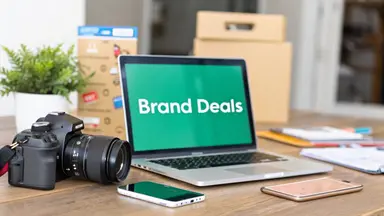
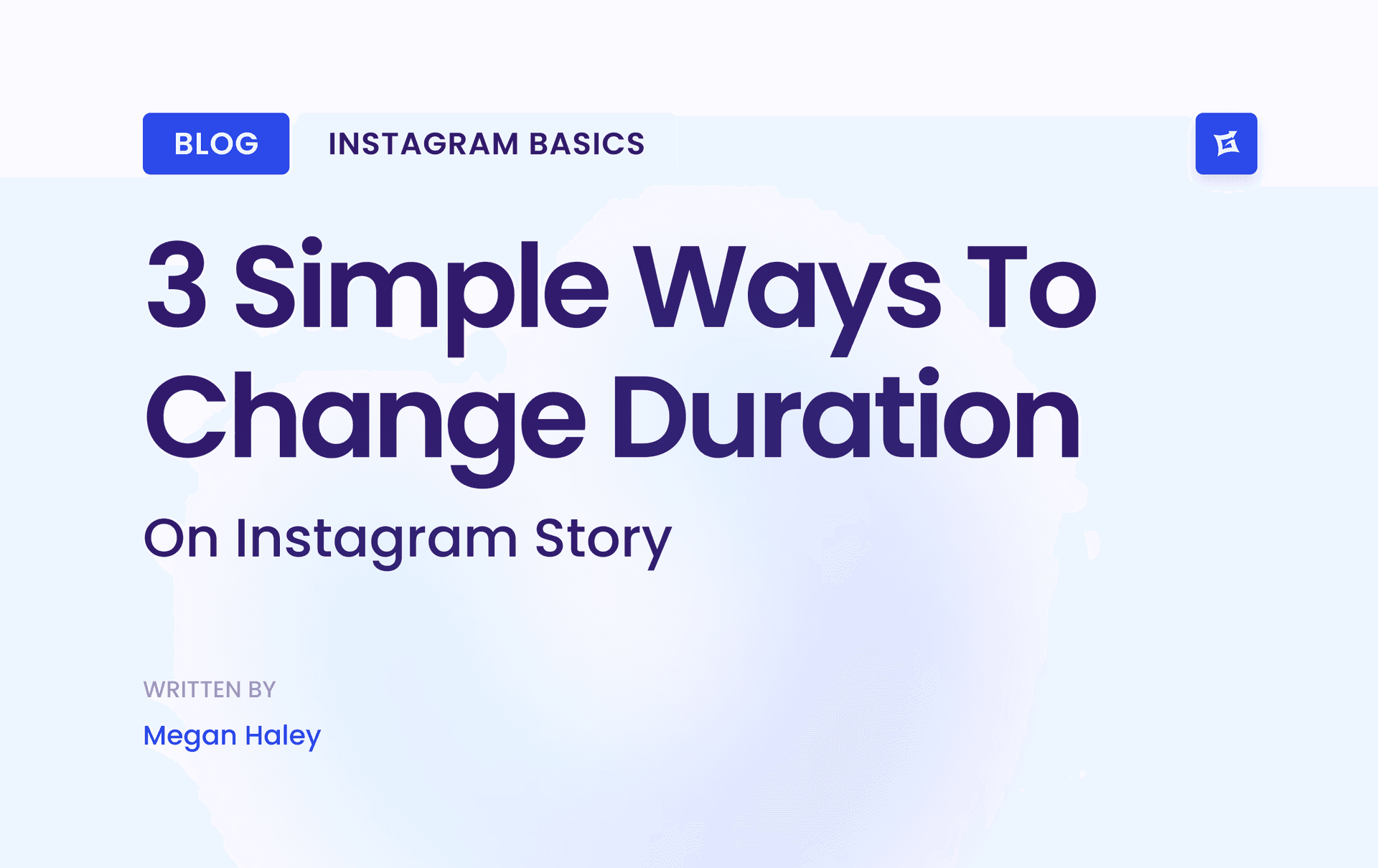
.png&w=1920&q=75&dpl=dpl_9XSWKBjhcBN6v6b1SN7m3p1WWjfr)
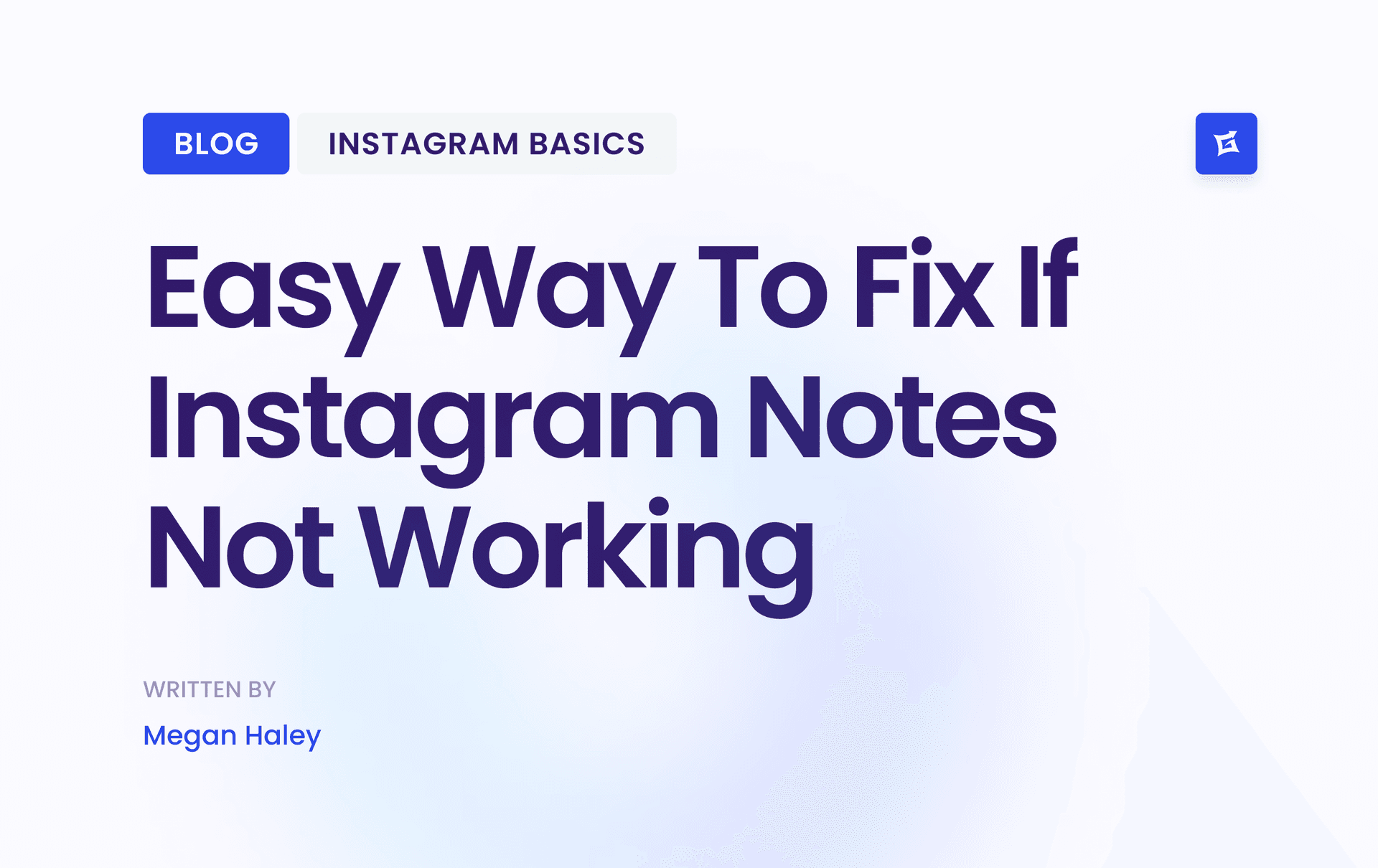
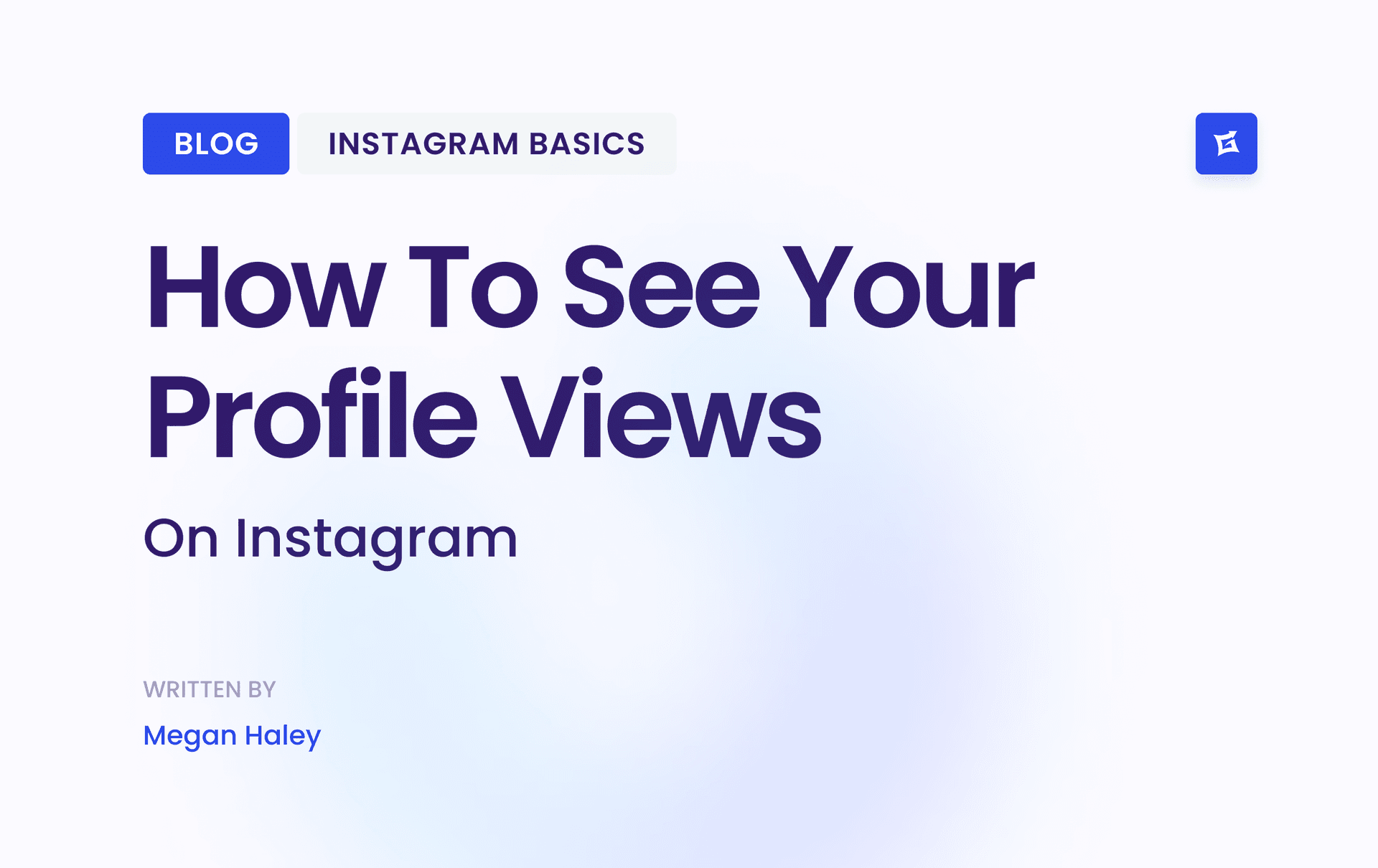
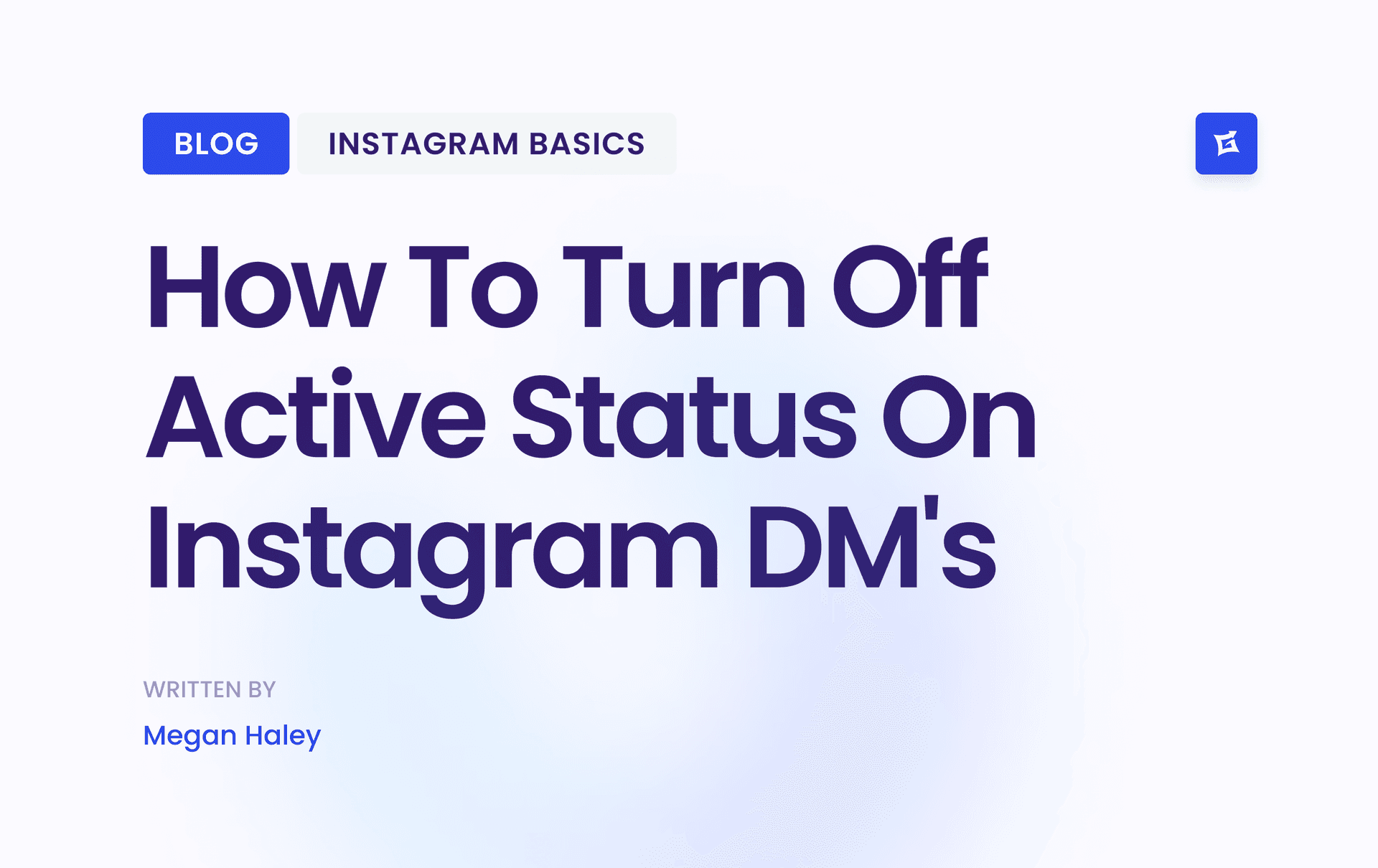



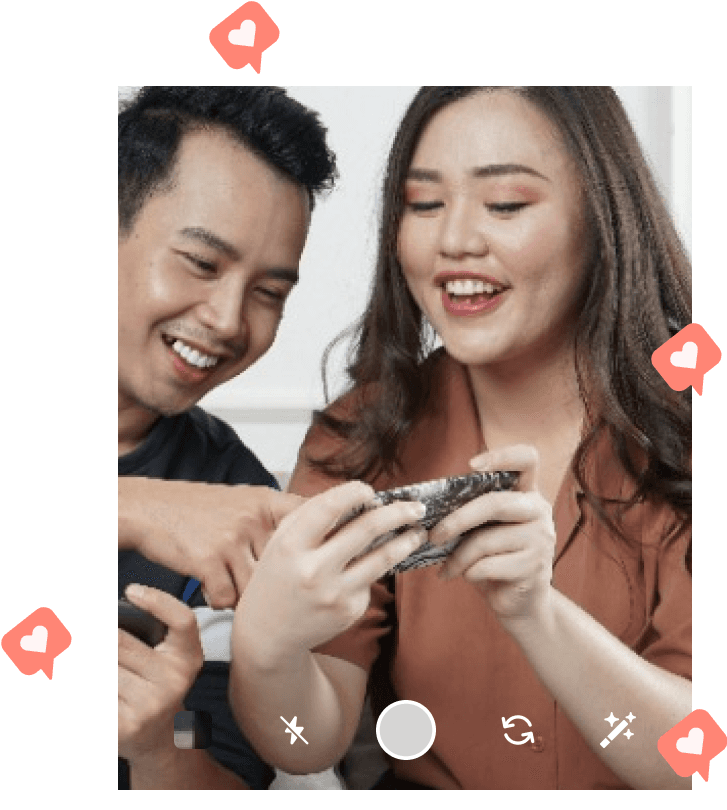
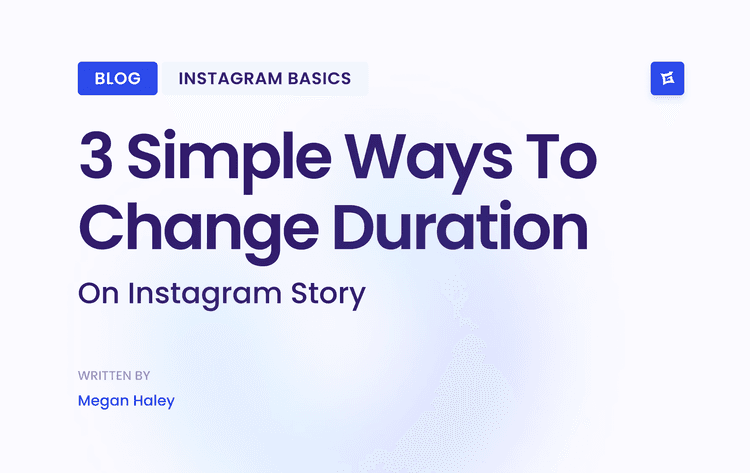
.png&w=750&q=75&dpl=dpl_9XSWKBjhcBN6v6b1SN7m3p1WWjfr)
